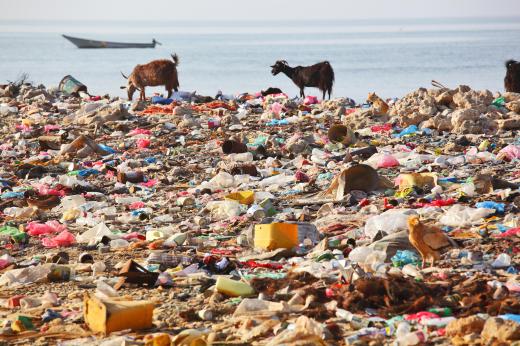What is Landfill Gas?
 Mary McMahon
Mary McMahon
Landfill gas is gas which is produced during the breakdown of materials in a landfill. The development of gas is a normal part of the breakdown process in landfills, and it presents a hazard and an issue which must be dealt with by waste management authorities. There are a number of options for handling landfill gas in landfills and similar facilities, with very few modern landfills doing nothing at all with their landfill gas.
This gas is the byproduct of organic decay, which occurs as microorganisms attack organic materials such as food waste and paper inside a landfill. Landfill gas is primarily methane and carbon dioxide, with mixtures of other gases which can vary, depending on the organisms which live in the landfill, its age, and the type of materials dumped into it.

One issue with landfill gas is that it is flammable, and there have been documented cases of explosions caused by buildups of landfill gas. Because landfills also get hot, explosions and fires are a very real risk. Another issue is that the gas can be involved in global warming, making it unwise to allow it to freely vent into the natural environment. Landfill gas can also smell quite strong, which be an issue in some communities.

Historically, the explosion risk was managed simply by venting a landfill. Pipes were used to allow the landfill gas to escape so that it could not build up inside the landfill. Modern landfills may trap the gas after venting to avoid releasing it into the environment. Once trapped, the gas can be used in a variety of ways.
Some uses for this gas involve burning it to power vehicles, generate electricity, or to create heat. The gas may need to be filtered to remove some components first, and sometimes it is necessary to blend it with other gases, but these uses can be very efficient. Landfill gas can also be used in fuel cells. All of these uses turn a waste product into energy, making them environmentally friendly options.
Landfill gas can also be processed, packaged, and sold. There are some commercial uses for the gases produced in a landfill, and a large facility or families of facilities which can pool their gas may be able to find a market for this byproduct of decay. These uses can be appealing because they may make a landfill more profitable, which can be a concern with some facilities.
AS FEATURED ON:
AS FEATURED ON:












Discuss this Article
Post your comments